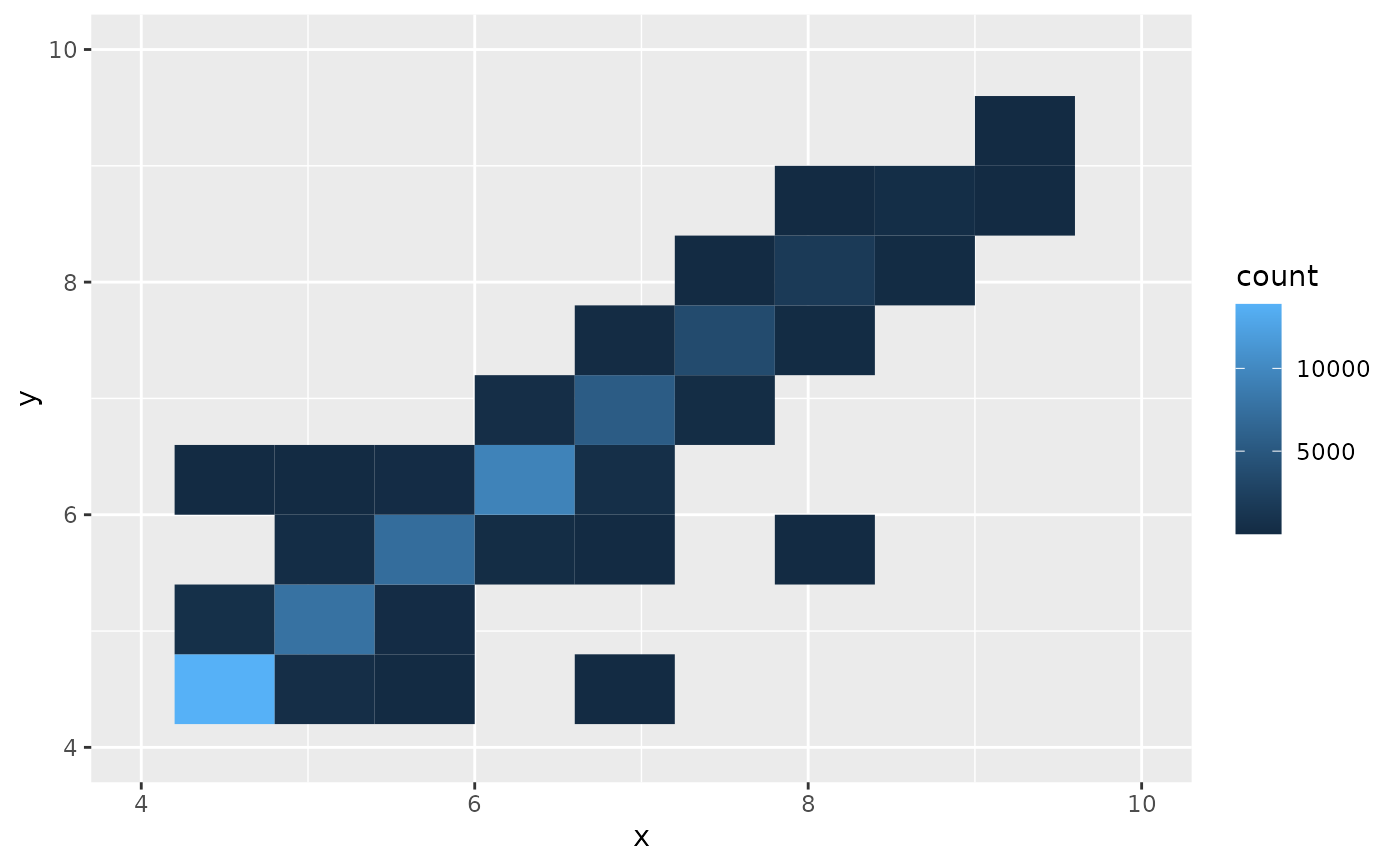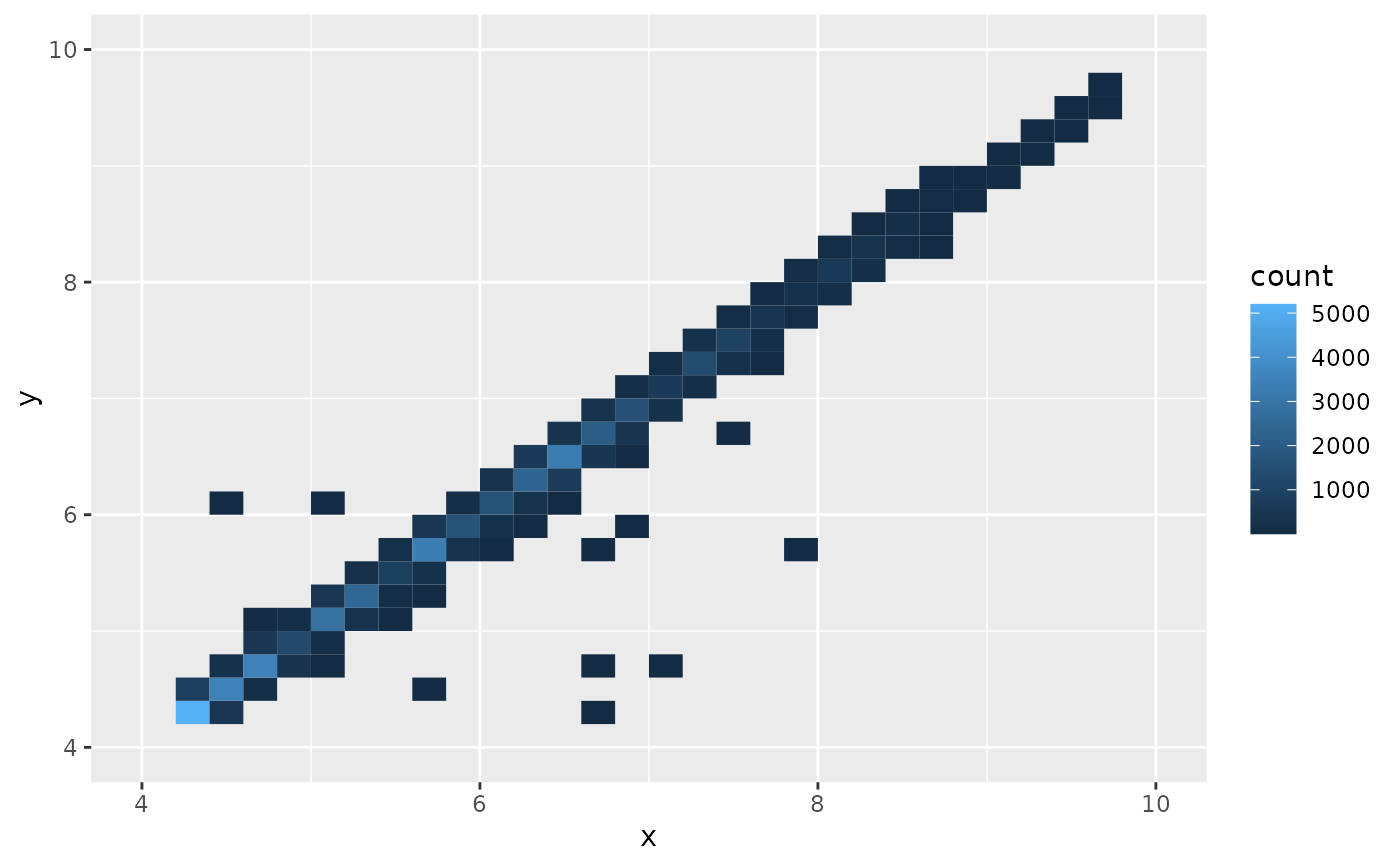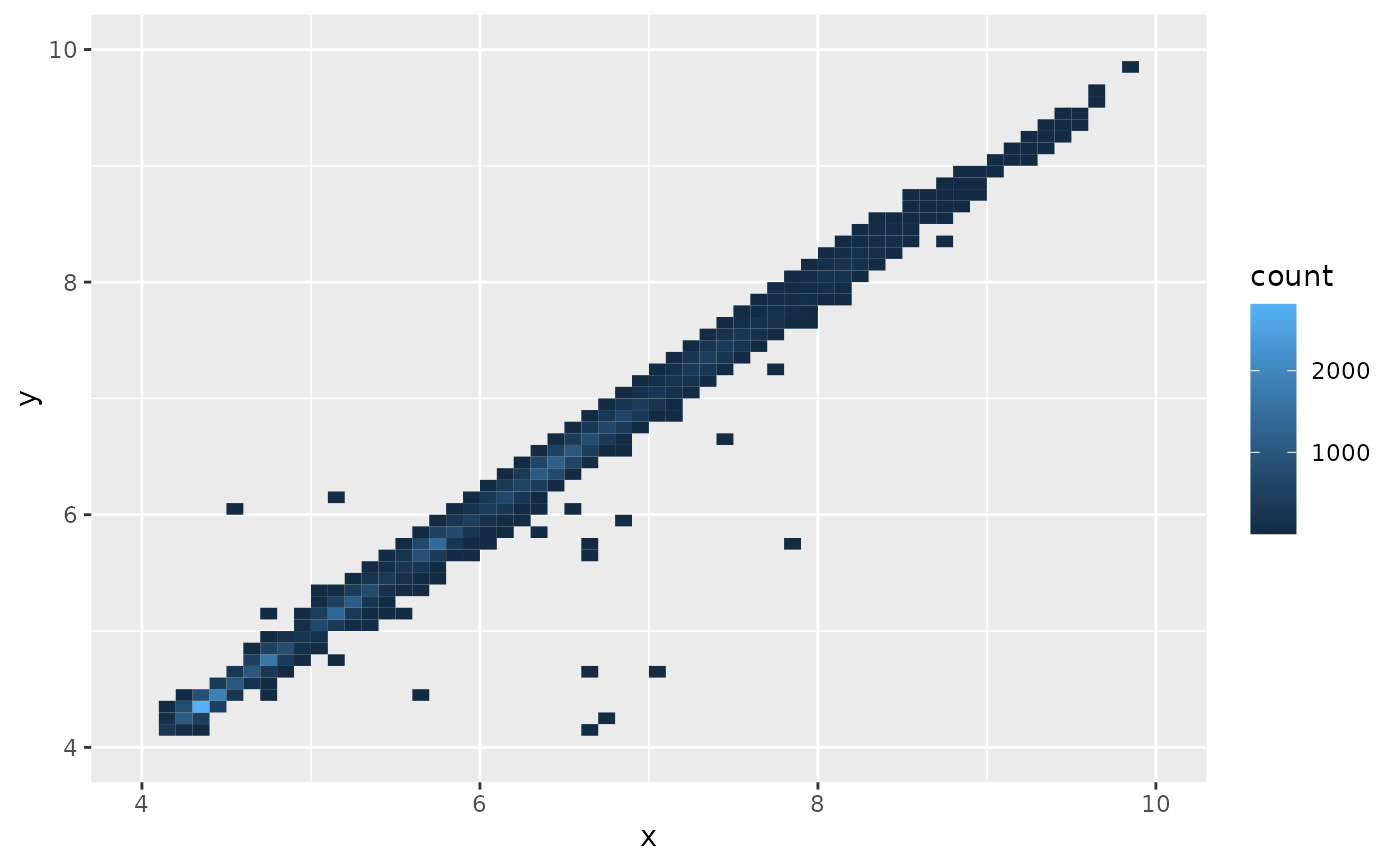Divides the plane into rectangles, counts the number of cases in
each rectangle, and then (by default) maps the number of cases to the
rectangle's fill. This is a useful alternative to geom_point()
in the presence of overplotting.
geom_bin_2d(
mapping = NULL,
data = NULL,
stat = "bin2d",
position = "identity",
...,
na.rm = FALSE,
show.legend = NA,
inherit.aes = TRUE
)
stat_bin_2d(
mapping = NULL,
data = NULL,
geom = "tile",
position = "identity",
...,
bins = 30,
binwidth = NULL,
drop = TRUE,
na.rm = FALSE,
show.legend = NA,
inherit.aes = TRUE
)Arguments
- mapping
Set of aesthetic mappings created by
aes()oraes_(). If specified andinherit.aes = TRUE(the default), it is combined with the default mapping at the top level of the plot. You must supplymappingif there is no plot mapping.- data
The data to be displayed in this layer. There are three options:
If
NULL, the default, the data is inherited from the plot data as specified in the call toggplot().A
data.frame, or other object, will override the plot data. All objects will be fortified to produce a data frame. Seefortify()for which variables will be created.A
functionwill be called with a single argument, the plot data. The return value must be adata.frame, and will be used as the layer data. Afunctioncan be created from aformula(e.g.~ head(.x, 10)).- position
Position adjustment, either as a string, or the result of a call to a position adjustment function.
- ...
Other arguments passed on to
layer(). These are often aesthetics, used to set an aesthetic to a fixed value, likecolour = "red"orsize = 3. They may also be parameters to the paired geom/stat.- na.rm
If
FALSE, the default, missing values are removed with a warning. IfTRUE, missing values are silently removed.- show.legend
logical. Should this layer be included in the legends?
NA, the default, includes if any aesthetics are mapped.FALSEnever includes, andTRUEalways includes. It can also be a named logical vector to finely select the aesthetics to display.- inherit.aes
If
FALSE, overrides the default aesthetics, rather than combining with them. This is most useful for helper functions that define both data and aesthetics and shouldn't inherit behaviour from the default plot specification, e.g.borders().- geom, stat
Use to override the default connection between
geom_bin_2d()andstat_bin_2d().- bins
numeric vector giving number of bins in both vertical and horizontal directions. Set to 30 by default.
- binwidth
Numeric vector giving bin width in both vertical and horizontal directions. Overrides
binsif both set.- drop
if
TRUEremoves all cells with 0 counts.
Aesthetics
stat_bin2d() understands the following aesthetics (required aesthetics are in bold):
xyfillgroup
Learn more about setting these aesthetics in vignette("ggplot2-specs").
Computed variables
- count
number of points in bin
- density
density of points in bin, scaled to integrate to 1
- ncount
count, scaled to maximum of 1
- ndensity
density, scaled to maximum of 1
See also
stat_binhex() for hexagonal binning
Examples
d <- ggplot(diamonds, aes(x, y)) + xlim(4, 10) + ylim(4, 10)
d + geom_bin_2d()
#> Warning: Removed 478 rows containing non-finite values (stat_bin2d).
 # You can control the size of the bins by specifying the number of
# bins in each direction:
d + geom_bin_2d(bins = 10)
#> Warning: Removed 478 rows containing non-finite values (stat_bin2d).
#> Warning: Removed 4 rows containing missing values (geom_tile).
# You can control the size of the bins by specifying the number of
# bins in each direction:
d + geom_bin_2d(bins = 10)
#> Warning: Removed 478 rows containing non-finite values (stat_bin2d).
#> Warning: Removed 4 rows containing missing values (geom_tile).
 d + geom_bin_2d(bins = 30)
#> Warning: Removed 478 rows containing non-finite values (stat_bin2d).
d + geom_bin_2d(bins = 30)
#> Warning: Removed 478 rows containing non-finite values (stat_bin2d).
 # Or by specifying the width of the bins
d + geom_bin_2d(binwidth = c(0.1, 0.1))
#> Warning: Removed 478 rows containing non-finite values (stat_bin2d).
# Or by specifying the width of the bins
d + geom_bin_2d(binwidth = c(0.1, 0.1))
#> Warning: Removed 478 rows containing non-finite values (stat_bin2d).
